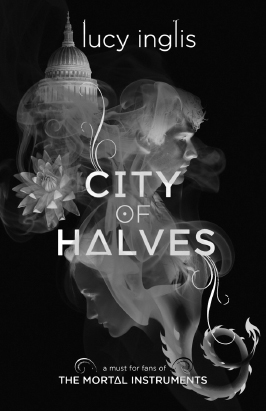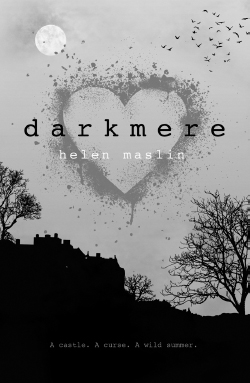Crow Mountain (33 page)
Authors: Lucy Inglis

NATE CROW
1867
and
EMILY
1923
For a long time, only the sounds of the mountain can be heard.
âShe did it,' says Cal at last. âShe came back.'
When Hope speaks, it isn't to Cal, but to the stone itself. âOK, you two, I give in.' She looks at Cal. âAs soon as we can get it organized?'
He watches her. âYou mean it?'
âYes. How can we argue with them? I stopped trying to on that porch five years ago.'
Cal's yell of triumph echoes round the meadow as he lifts Hope clear off the ground and spins her around. Setting her back on her feet he kisses her. âCome on, let's go home. We've got people to tell.'
Hope pops the driver's door as Cal hups Jake into the back of the rig, fastening the tailgate. The sun is behind him, gilding his hair and skin. Everything is gold and silver. For a fleeting second her heart hurts, with love and pride, and with what she almost lost for ever
Then a movement near the cabin catches her eye. âCal?'
The white horse stands in the meadow, studying them through pale eyes. His hooves are four square in the wild flowers as his mane and tail are caught by the wind.
The world continues to turn, but on the Montana mountain where the tale of one American family began and so nearly ended, time is once more irrelevant and immeasurable. Radiant in the lowering sun, the stallion turns his head and looks west: the horse of a lifetime.
Maybe more than one lifetime.
And all the birds, singing.
ACKNOWLEDGEMENTS
âThe Montana Book', as
Crow Mountain
is known by my family and friends, has had a fast journey to publication and my head is still spinning. The story was initially sparked more than a decade ago by a book called
Bury My Heart at Wounded Knee
, introducing me to the history of the Native Americans. And by a lovely stranger on a long Miami Beach afternoon who laughed and told me the tattoo on the inside of her wrist was the state outline of Montana, âthe most beautiful place in the world. Home.'
I worked in America for some time after that meeting and adored it: the sense of potential spinning across a continent, yet also that sense that no one is ever far from the edge of disaster. I read about settler marriages. And divorces. The stunning alpine wilderness of Montana, and in particular the Glacier National Park and St Mary Lake. I read about the railroads. The American Civil War. The terrible subjugation of the Native American people as the US government fought a hypocritical war to free the Southern slaves. But the story that stuck in my marrow was the near-extinction of the plains bison. Twenty-five million deaths in fewer than two decades. This story lies at the heart of the book.
How to tell it? That was the problem: I just didn't know. Then in February 2014 I visited an Amish craft store in Ohio. I was lecturing on eighteenth-century childbirth in Cleveland and we were taking a day out. My host went to the restroom so I loitered, looking at the frying pans, washtubs and wood-fired stoves. There were also cute but complicated oil
lanterns, ingenious wooden spoons, spatulas with hook handles for pulling out hot tins and a wall of pretty cookie cutters in the shape of every state. I picked up Montana immediately: an automatic reaction. Two dollars, I thought, who cares? Then I hesitated. Why should I clutter my already crammed kitchen drawer with it? Because of a beautiful girl with a now-outdated tattoo? Because since then I'd read dozens of academic articles and books on people who abandoned everything they knew to make a new life on the edge of a new world? The horror of exterminating a species? I put it back. Yet as I looked at it, I saw Nate and Emily, Hope and Cal. Just like that, I knew what they looked like and who they were, their voices crowding my head. My host returned. I grabbed Montana and paid. We walked into the car park and the cool sunshine of a new American Spring. In the car, I watched as we passed horse-drawn carriages, rolling hills, homesteads and barns, people still living in another century. I came home and wrote the book. Still haven't made the biscuits.
As a historian, I wanted to make this book true to the remote young states of the second half of the nineteenth century, and as such the events â such as the Battle of the Wilderness, John Gantt's wagon train and the construction of Fort Shaw from what was Camp Reynolds â are all real events. I've tried to do justice to the varied tribes of Montana, although I deliberately robbed them of a voice, apart from Dog Child, who is one of the only documented and photographed Blackfoot braves of the time. I can't speak for them, and I wouldn't pretend to: it was not my remit here.
But the writing of this book has been such a joy, and I thank everyone involved in it. Imogen Cooper, Barry Cunningham, Rachel Hickman and the wonderful team at Chicken House have supported the cast of
Crow Mountain
like friends. Thanks too, as ever, to Kirsty McLachlan and all at David Godwin Associates. Big thank yous must also go to Lucy Fisher, Essie Fox, Brigid Coady and Sally Harris for being early and such encouraging readers. To Richard, Mr Inglis, for his constant love and support, and for ignoring the tears streaming down my face during the days it took to write the end of Nate's life and Emily's final letter to him.
And thank
you
for reading to the end. This has been a wonderful part of
my
story, but if you take one thing from this book, take the last words my beloved Emily left in my head:
All our lives will be, in time, just stories. Live the best story you can.
ALSO BY LUCY INGLIS

CITY OF HALVES
L
ondon. Present day. Girls are disappearing. And strange creatures are on the streets.
When Lily is attacked by a two-headed dog, she's saved by hot, tattooed and not-quite-human Regan. As Guardian of the Gates it's his job to protect both halves of the City, new and old, from a world of restless creatures that threaten its very existence.
As the City spins out of control, Lily and Regan race to find the girls, discover the truth, and expose a terrible conspiracy.
Paperback, ISBN 978-1-909489-09-7, £6.99 ⢠ebook, ISBN 978-1-909489-53-0, £6.99
TRY ANOTHER GREAT BOOK FROM CHICKEN HOUSE

DARKMERE by HELEN MASLIN
O
utsider Kate has a crush on the coolest boy in school, Leo. He's inherited a castle, a menacing ruin on the rugged English coast. When he invites her along for the summer, she finally feels part of the gang.
But Darkmere's empty halls are haunted by dark ghosts. Two centuries ago, Elinor â the young wife of the castle's brooding master â uncovered a dreadful truth.
As past and present entwine, Kate and Elinor find themselves fighting for their lives â and for the ones they love.
Paperback, ISBN 978-1-910002-34-6, £7.99 ⢠ebook, ISBN 978-1-910002-75-9, £7.99
Text © Lucy Inglis 2015
First paperback edition published in Great Britain in 2015
This electronic edition published in 2015
Chicken House
2 Palmer Street
Frome, Somerset BA11 1DS
United Kingdom
www.doublecluck.com
Lucy Inglis has asserted her right under the Copyright, Designs and Patents Act 1988, to be identified as the author of this work.
All rights reserved.
No part of this publication may be reproduced or transmitted or utilized in any form or by any means, electronic, mechanical, photocopying or otherwise, without the prior permission of the publisher.
All rights reserved under International and Pan-American Copyright Conventions. By payment of the required fees, you have been granted the non-exclusive, non-transferable right to access and read the text of this ebook on-screen. No part of this publication may be reproduced, transmitted, downloaded, decompiled, reverse engineered, or stored in or introduced into any information storage and retrieval system, in any form or by any means, whether electronic, mechanical or otherwise, now known or hereinafter invented, without the express prior written permission of the publisher.
Produced in the UK by CPI Group (UK) Ltd, Croydon CR0 4YY
Cover and interior design by Helen Crawford-White
Horse illustration by AmyLyn Bihrle
British Library Cataloguing in Publication data available.
PB ISBN 978-1-910002-35-3
eISBN 978-1-910002-85-8
